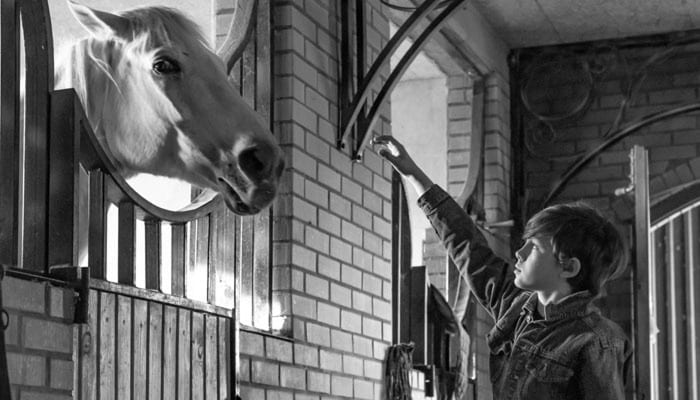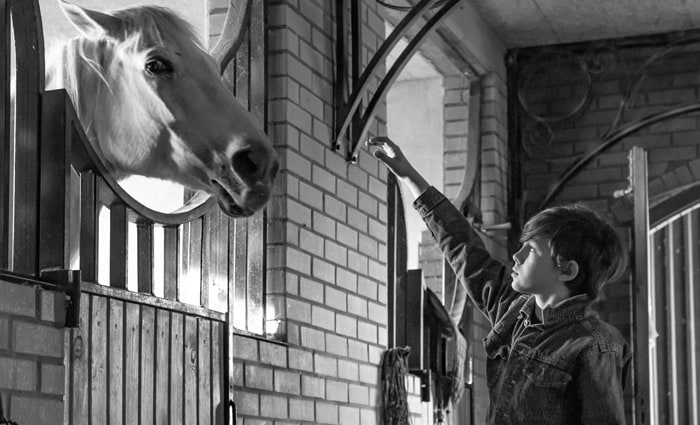
The life of a Victorian stable boy wasn't an easy one, getting up at the crack of dawn every morning and undertaking the arduous task of taking care of the horses and their needs. This was a very important role, as the safety and wellbeing of the horses was in the stable boy's hands.
The average age of a stable boy was between 10 and 16, but considering many poorer children didn't go to school in early Victorian Britain, it was commonplace for them to be working by the age of ten to boost the family's income. School hadn't yet become compulsory, so getting a steady job as a stable boy was considered a positive step.

© alonaphoto / Adobe Stock
Daily duties
Beginning early in the morning, the stable boy was expected to have the stables open, cleaned out and the horses fed by around 6am. Feeding time meant cleaning the rack, putting in fresh hay and giving the horses fresh water. A short time later, the stable boy would give them their main feed of oats.
Twice a day, he would clean the stable by removing the waste, sweeping out the interior and then washing it down. The horses would then be groomed using a tool known as a "wisp". It was made from a hay band, which was moistened with water and doubled up, but not twisted. This was swept over every part of the horse's body.
Any stains were removed by sponging and usually, the curry comb wasn't necessary if this procedure was followed properly. Grooming would be finished off with a flannel or linen cloth. The stable boy would also wipe the horse's eyes and nostrils with a sponge.
The mane and tail would then be combed to make them smooth and trimmed if necessary. Finally, a little oil would be applied to the tail, mane and forelock for a shiny finish.
Social status
In larger households, there would be a coachman and a groom responsible for each coach and its horses and they would be helped by the stable boy. In smaller households, where there weren't as many staff, the stable boy may also have been required to maintain the carriage.
In the early 19th century, a stable boy would earn a small wage - usually between £6 and £8 per year. This equates to between around £800 and £1,000 per annum in today's money, taking inflation into account.
The stable boy was at the bottom of the pecking order when it came to the servants' status. In the stables, the coachman was in charge, the groomsman was below him and the stable boy was below them both.
As well as skill in driving, the coachman was responsible for making sure the other staff carried out their duties properly. He made sure the horses were well looked after and properly fed and groomed.
The coachman was empowered to tell the groom and stable boy to help him prepare the carriage for use. This would include positioning the horses in front of the carriage and ensuring they were properly attached. He may also have asked the stable boy to clean the carriage after use.
With a basic knowledge of horse healthcare, the coachman could also provide simple remedies to any ailments that weren't too serious, otherwise seek the appropriate help when necessary.
Bedding down
After a long day, when the horses may have been out on several runs, the stable boy would wait up to make sure they were fed, watered and comfortably bedded down before he could go to bed, under the supervision of the coachman. It was the coachman's responsibility to make sure all of these tasks had been carried out effectively before he could lock up the stables and retire for the night himself.
Despite the fact that the stable boy occupied one of the lowliest positions in the household, his job was one of the most important. Looking after the horses was a full-time job, especially on a large estate. When horse-drawn carriages were the only means of transport, in the days before motor cars, families could find themselves stranded if their horses weren't well looked after.
Working as a stable boy was also a good grounding to gain experience and find employment as a groom, before moving up through the ranks.
MA Grigg’s country store stocks the highest-quality equestrian equipment and clothing, including body protectors, riding boots, chaps, helmets, hats and more.
Visit Grigg’s Equestrian in person or browse our website to find everything you need.





